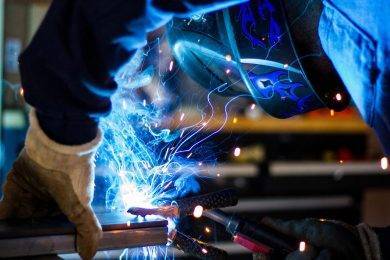Are you considering purchasing industrial or medical grade argon for your process? British scientist Henry Cavendish first isolated the noble gas in 1785, according to RSC.org. This colourless and odourless gas is named after the Greek word for “lazy,” based on its reactivity and the few chemical compounds it forms. Nevertheless, there are several typical applications of argon gas you should know about, including the following:
Lighting
Argon is added to neon tubes for lighting applications. As electricity goes through the argon, it creates a purple/blue glow. This process emits light at a significantly lower voltage. This fact has made argon a popular gas for this purpose due to long-term savings.
Another lighting application for argon is in incandescent light bulbs. It helps prevent the filament’s fast oxidation. The result is the bulb lasts longer, which is another cost-effective benefit of the noble gas.
Document Preservation
Surveys show that only 11% of Australian companies have gone paperless, according to the Sydney Morning Herald. Today some companies also use argon to preserve old documents.
This is due to the gas’s inert nature, which creates a protective environment. It prevents documents from getting damaged while being stored and displayed. The process can be especially critical for various sectors like publishing, legal, and taxation. In such situations, it’s crucial to maintain the structural integrity of paper documents.
Manufacturing
Argon is used in manufacturing industries for applications like welding, especially titanium. The gas also functions as a shield during the welding process since it prevents oxygen contact.
Other metal manufacturing processes also use argon to reduce chromium losses. In other words, it’s possible to reach the target carbon content at a lower temperature. Meanwhile, companies also use argon in aluminium manufacturing to remove hydrogen.
Healthcare
Argon is used in various ways within the healthcare industry. This includes eye and diabetes treatments. Surgeons also use argon for connecting arteries and removing tumours. The medical industry uses argon lasers since it can produce high precision for targeting areas.
The noble gas is also used in the form of cryo-needles for treating kidney tumours. It involves freezing to remove diseased tissue.
The medical field also uses argon to treat other problems. This includes altering heartbeat rhythms.
Windows
Sometimes argon is used as thermal insulation for windows. This involves double-glazed windows that fill the gaps between two panes.
Food/Beverage Industry
Argon is used in the food and beverage industry due to its inertness. An inert gas doesn’t experience certain chemical reactions when placed in particular conditions.
In terms of beverages, manufacturers add argon to wine barrels to remove air. Since the noble gas has a higher density than air, it protects the liquid by settling above it. This helps to prevent the wine from experiencing oxidation and souring.
These are both situations winemakers want to avoid. While oxygen can provide several benefits on Earth, it can also cause issues when contacting beverages like wine.
The above-mentioned uses of argon gas are among the most common ones. This “lazy” gas actually has several practical applications in sectors like manufacturing, healthcare, and scuba-diving.
My name is Sardar Ayaz a professional content writer and SEO expert having Proven record of excellent writing demonstrated in a professional portfolio Impeccable grasp of the English language, including idioms and current trends in slang and expressions. I have ability to work independently with little or no daily supervision with strong interpersonal skills and willingness to communicate with clients, colleagues, and management.
I can produce well-researched content for publication online and in print, organize writing schedules to complete drafts of content or finished projects within deadlines. I have 12 years’ experience to develop related content for multiple platforms, such as websites, email marketing, product descriptions, videos, and blogs.
I use search engine optimization (SEO) strategies in writing to maximize the online visibility of a website in search results











